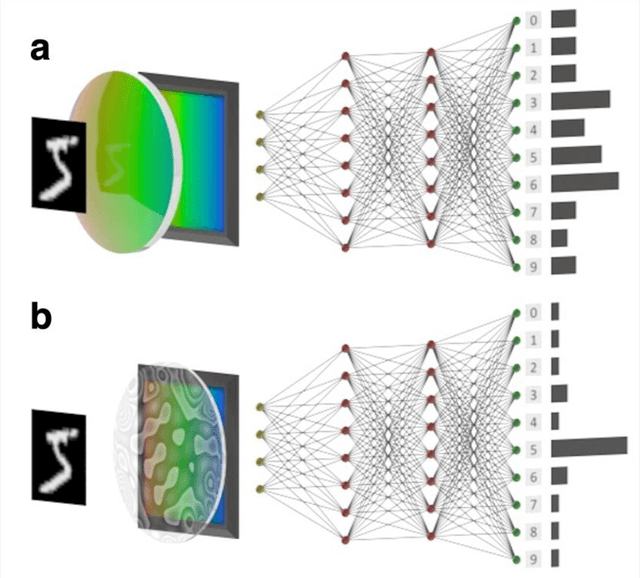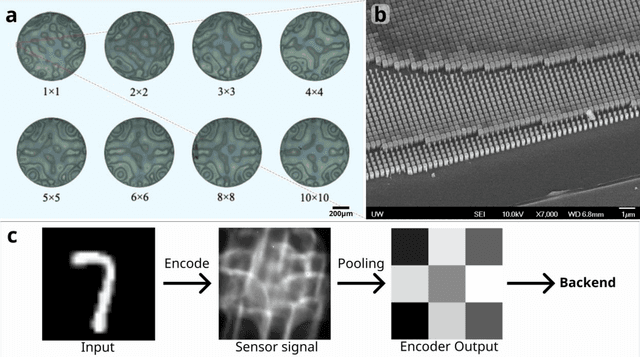Luocheng Huang
Photonic Advantage of Optical Encoders
May 02, 2023


Abstract:Light's ability to perform massive linear operations parallelly has recently inspired numerous demonstrations of optics-assisted artificial neural networks (ANN). However, a clear advantage of optics over purely digital ANN in a system-level has not yet been established. While linear operations can indeed be optically performed very efficiently, the lack of nonlinearity and signal regeneration require high-power, low-latency signal transduction between optics and electronics. Additionally, a large power is needed for the lasers and photodetectors, which are often neglected in the calculation of energy consumption. Here, instead of mapping traditional digital operations to optics, we co-optimized a hybrid optical-digital ANN, that operates on incoherent light, and thus amenable to operations under ambient light. Keeping the latency and power constant between purely digital ANN and hybrid optical-digital ANN, we identified a low-power/ latency regime, where an optical encoder provides higher classification accuracy than a purely digital ANN. However, in that regime, the overall classification accuracy is lower than what is achievable with higher power and latency. Our results indicate that optics can be advantageous over digital ANN in applications, where the overall performance of the ANN can be relaxed to prioritize lower power and latency.
Foveated Thermal Computational Imaging in the Wild Using All-Silicon Meta-Optics
Dec 13, 2022Abstract:Foveated imaging provides a better tradeoff between situational awareness (field of view) and resolution and is critical in long-wavelength infrared regimes because of the size, weight, power, and cost of thermal sensors. We demonstrate computational foveated imaging by exploiting the ability of a meta-optical frontend to discriminate between different polarization states and a computational backend to reconstruct the captured image/video. The frontend is a three-element optic: the first element which we call the "foveal" element is a metalens that focuses s-polarized light at a distance of $f_1$ without affecting the p-polarized light; the second element which we call the "perifoveal" element is another metalens that focuses p-polarized light at a distance of $f_2$ without affecting the s-polarized light. The third element is a freely rotating polarizer that dynamically changes the mixing ratios between the two polarization states. Both the foveal element (focal length = 150mm; diameter = 75mm), and the perifoveal element (focal length = 25mm; diameter = 25mm) were fabricated as polarization-sensitive, all-silicon, meta surfaces resulting in a large-aperture, 1:6 foveal expansion, thermal imaging capability. A computational backend then utilizes a deep image prior to separate the resultant multiplexed image or video into a foveated image consisting of a high-resolution center and a lower-resolution large field of view context. We build a first-of-its-kind prototype system and demonstrate 12 frames per second real-time, thermal, foveated image, and video capture in the wild.
 Add to Chrome
Add to Chrome Add to Firefox
Add to Firefox Add to Edge
Add to Edge